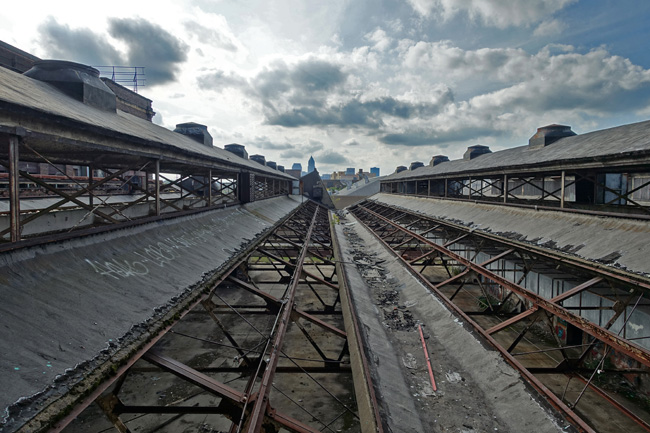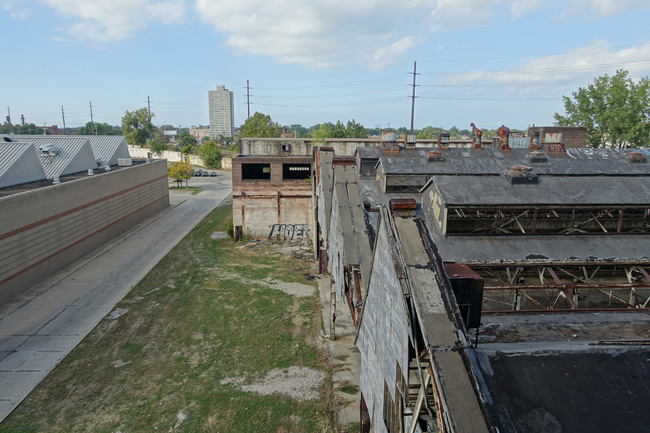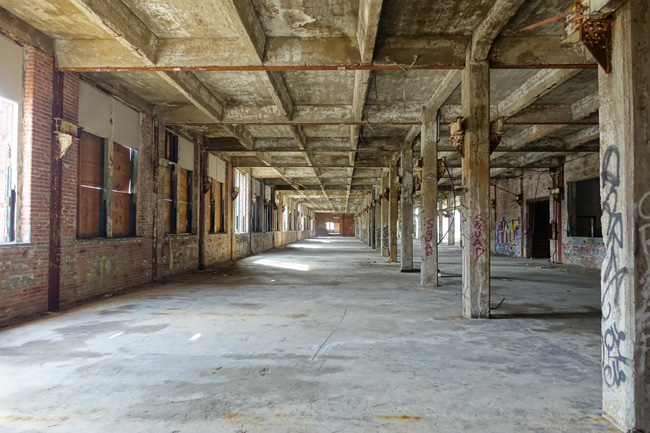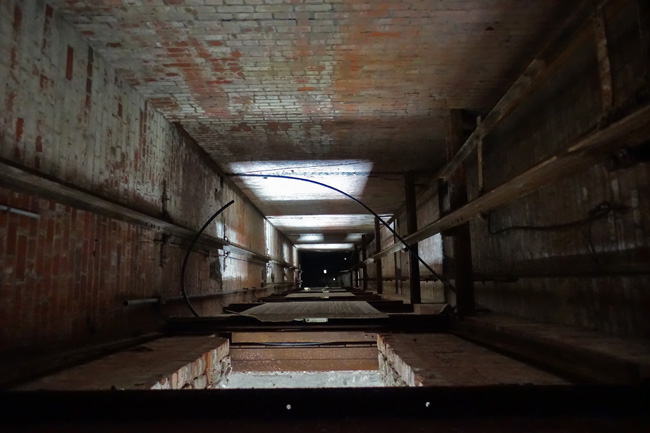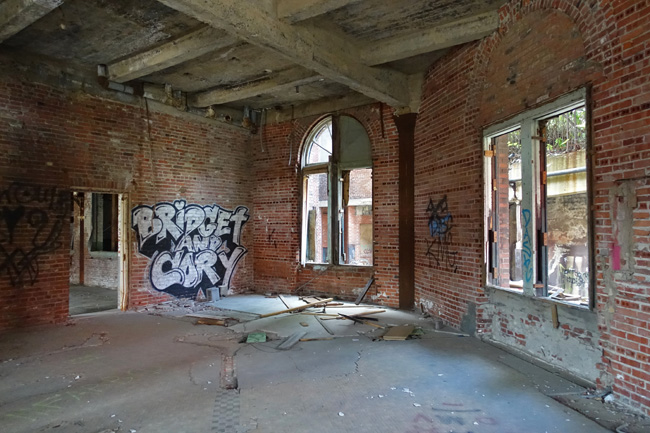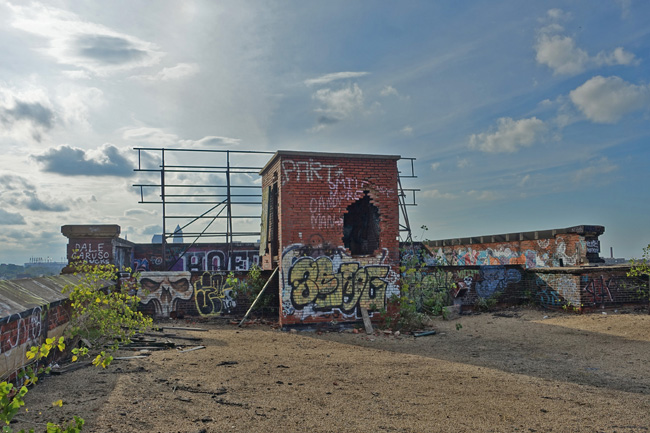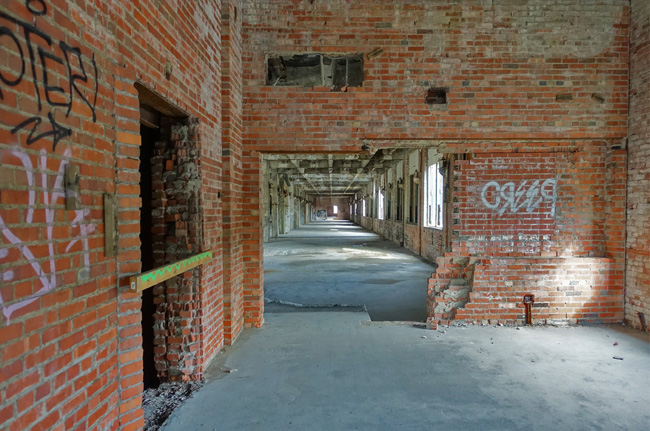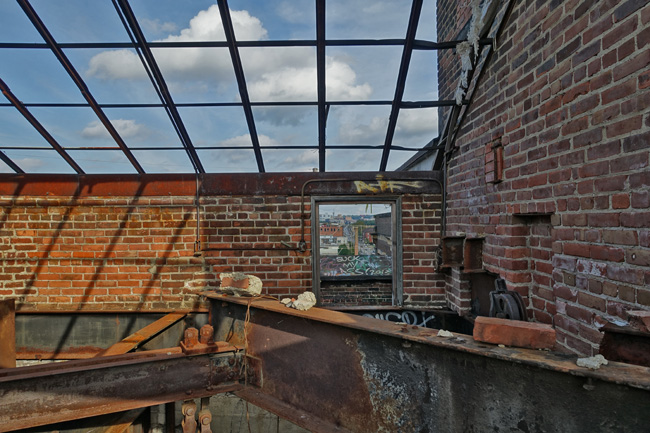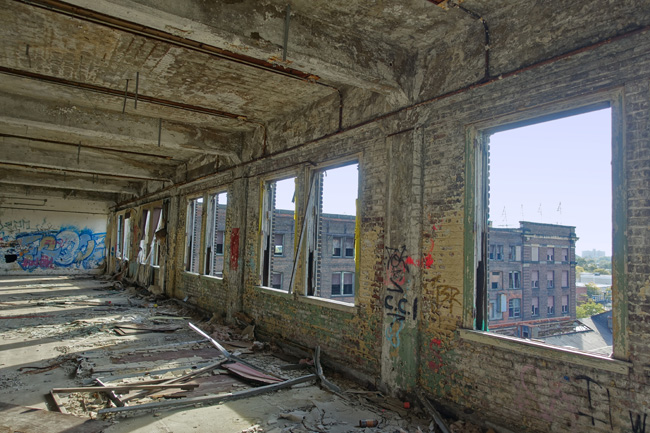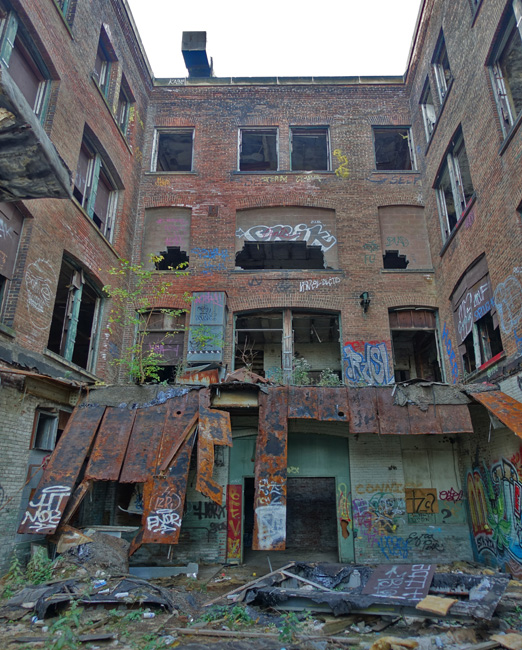The old Warner & Swasey complex consists of a rusting sawtooth-roofed structure partially surrounded by an eerie five-story brick building.
Surprisingly, there are no fences or signs to deter explorers. During my short visit, I encountered several small groups of people walking casually as though they were strolling through a public park.
Much of the structure has been gutted, the combined result of asbestos abatement work and scrappers.
Corridors once filled with machinery and the chaotic sounds of industry now stretch empty except for the occasional echo of footsteps.
Rusty stairways and deadly elevator shafts connect the yawning levels of the old factory.
Tiny stalactites of mineral deposits hang from ceilings and disused pipes. Graffiti adorns the walls--sometimes a mural carefully drawn by an artistic hand, sometimes a hastily sprayed existential question answered with a witty reply.
The rooftop affords views of distant skyscrapers as well as the decaying factory below.
Crumbling rooftop structures bear some of the most colorful graffiti.
Sadly, the property has become a dumping ground for trash and old tires. One of the basement rooms contained evidence that someone had been spending nights there: a sleeping pad, duffel bags full of clothes, discarded soda cans and food wrappers.
It is strange to think that this dark, haunting place was once alive with industry, providing the livelihood for hundreds of workers and their families.
In 1880 the two men resigned from Pratt & Whitney and moved to Cleveland to found their own business.
In the early years they focused on producing lathes, milling machines, and telescopes, which were used in Observatories across the US as well as Canada, Argentina, and Lebanon.
For the first 20 years of business, they lacked a formal corporate agreement. After years of growth and success, they finally adopted a corporate structure and officially became The Warner & Swasey Company in 1900.
Warner and Swasey remained good friends and even built homes next door to each other on "Millionaire's Row" in Cleveland.
The Warner & Swasey Company developed a reputation as one of the major producers of turret lathes. The company also took on military instrument contracts during the Spanish-American War and both world wars, producing gun sights, binoculars, and other optical equipment.
In 1946, Warner & Swasey began manufacturing hydraulic construction equipment, which quickly became a major driver of business growth.
In the 1970s, competition from Japan and Taiwan ate away at the company's profitability and in 1980, Warner & Swasey was acquired by Bendix Corporation. Bendix was later bought by Cross & Trecker, which closed the Carnegie Avenue plant in 1985.
Since its closure, the building has remained vacant for nearly thirty years. Its future remains uncertain.
Thank you for checking out this article. If you enjoyed it, please share it on Facebook.
And be sure to come back next time when I will explore Warner & Swasey's incredible abandoned observatory.
To receive an email announcement when I post my next article, please subscribe to Places That Were.
Until then, click here to read about other incredible abandoned places I've explored.
To see more pictures, please follow these links and subscribe to my feeds:
Facebook: http://www.facebook.com/placesthatwere
Instagram: http://instagram.com/theplacesthatwere
Twitter: https://twitter.com/placesthatwere/
Tumblr: http://placesthatwere.tumblr.com/
Google+: https://plus.google.com/u/0/+JimSullivanPlacesThatWere/posts
EyeEm: https://www.eyeem.com/u/placesthatwere
Youtube: https://www.youtube.com/jimplicit
Thank you!
